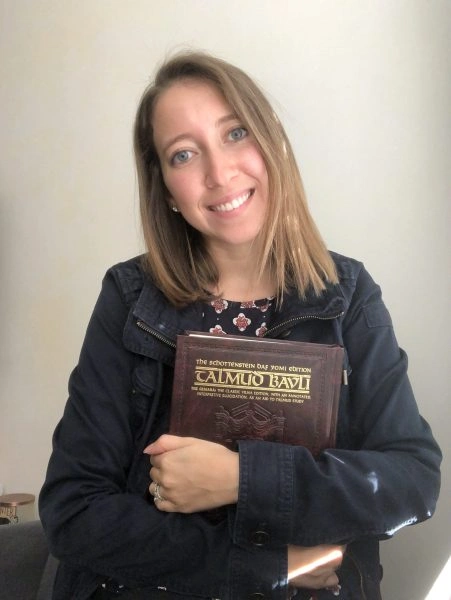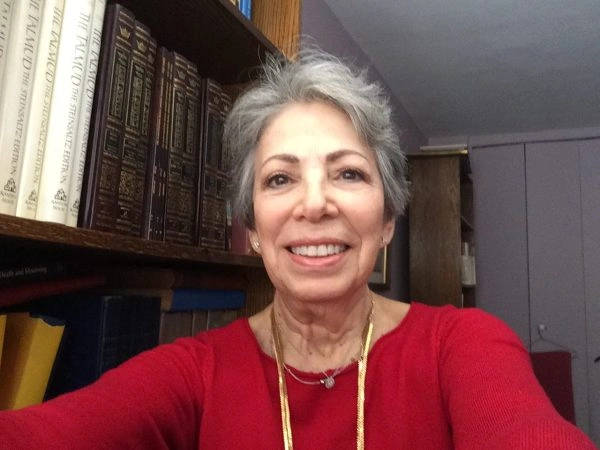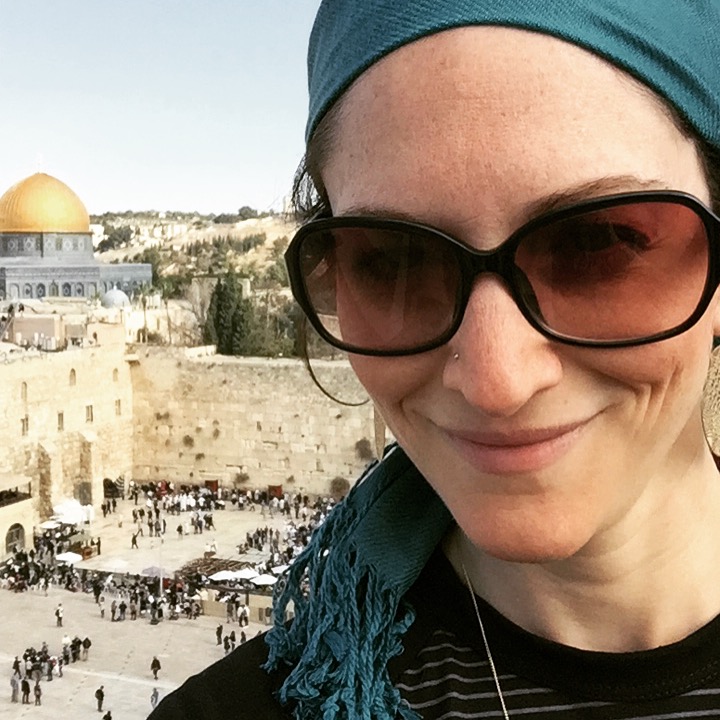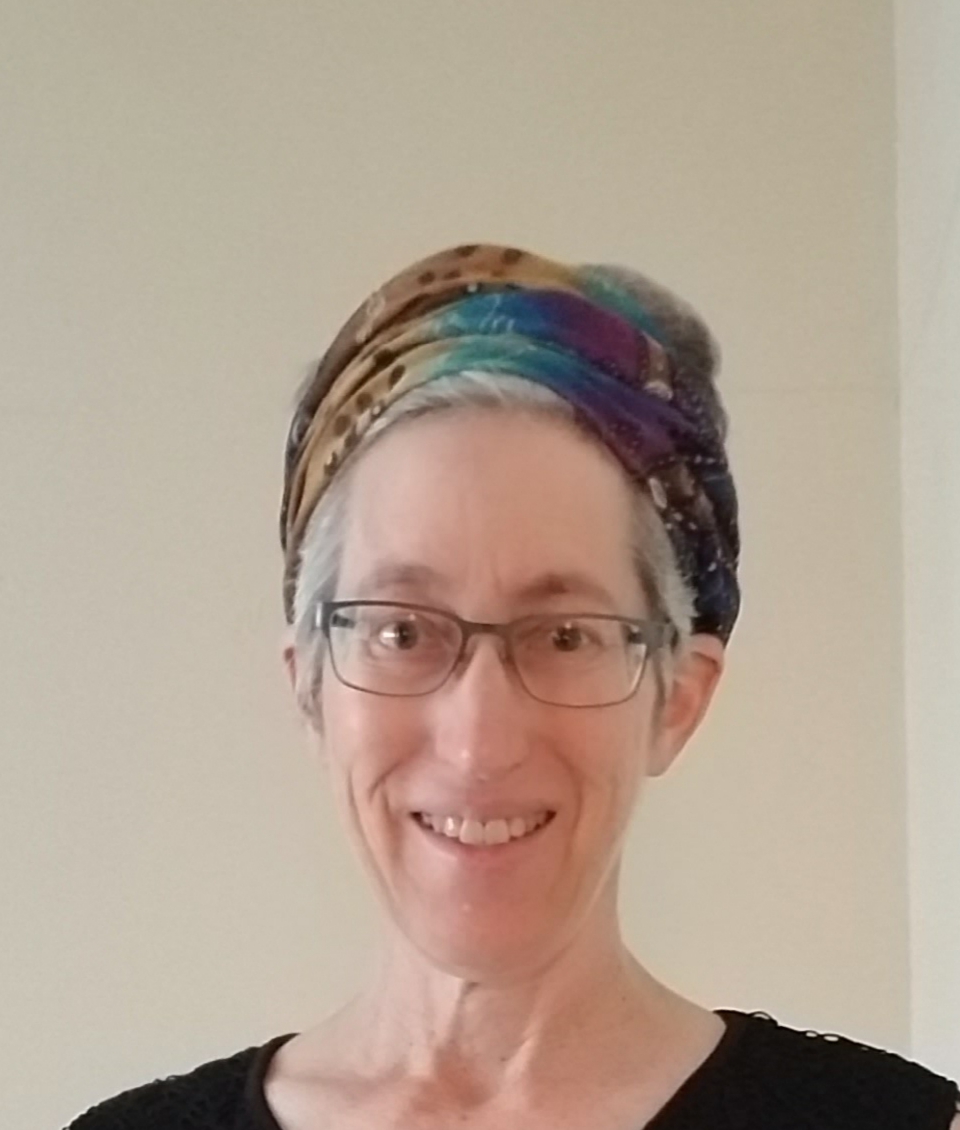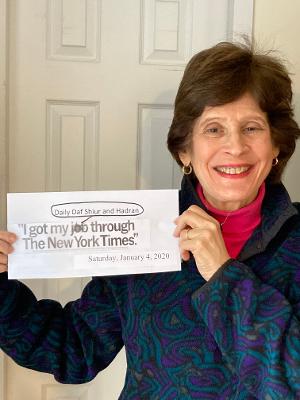Yevamot 82
רַבִּי יְהוּדָה לְטַעְמֵיהּ, דְּאָמַר: מִין בְּמִינוֹ לֹא בָּטֵיל.
The Gemara answers: Rabbi Yehuda conforms to his standard line of reasoning, as he stated a principle that if a particular type of food is mixed with food of its own type, it cannot be nullified under any circumstances.
אֲבָל לֹא נִימּוֹחָה מַאי — לֹא תַּעֲלֶה, אַדְּתָנֵי: אֲבָל חֲתִיכָה שֶׁל חַטָּאת טְהוֹרָה שֶׁנִּתְעָרְבָה בְּמֵאָה חֲתִיכוֹת שֶׁל חוּלִּין טְהוֹרוֹת לֹא תַּעֲלֶה, נִיפְלוֹג וְנִיתְנֵי בְּדִידַהּ: בַּמֶּה דְּבָרִים אֲמוּרִים, בְּשֶׁנִּימּוֹחָה, אֲבָל לֹא נִימּוֹחָה — לֹא תַּעֲלֶה!
The Gemara asks further: But had the piece of meat not been crushed, what would the halakha be? Presumably, it would not be nullified. If so, there is a difficulty, as instead of teaching a case involving non-sacred meat in the second half of the baraita, as follows: However, if a piece of a ritually pure sin-offering became intermingled with one hundred pieces of ritually pure non-sacred meat, the impure piece of a sin-offering is not nullified; let the tanna distinguish and teach it in the case involving only sacred meat, as follows: In what case is this statement said? It is in a case where the piece of meat has been crushed and broken into small parts, but if it has not been crushed, it is not nullified.
טְהוֹרוֹת בִּטְהוֹרוֹת עֲדִיף לֵיהּ.
The Gemara answers: Even so, the tanna prefers to address the case of an intermingling of ritually pure items with other ritually pure items and thereby teach a novel halakha, notwithstanding the fact that he could have made a distinction within the case of a ritually impure piece itself.
וּלְרֵישׁ לָקִישׁ, מַאי שְׁנָא רֵישָׁא וּמַאי שְׁנָא סֵיפָא? אָמַר רַב שִׁישָׁא בְּרֵיהּ דְּרַב אִידִי: רֵישָׁא, בְּטוּמְאַת מַשְׁקִין דְּרַבָּנַן. סֵיפָא, דְּאוֹרָיְיתָא.
The Gemara asks: And according to Reish Lakish, who establishes the baraita as referring to a piece of meat that has been crushed, what is different in the first clause of the baraita and what is different in the latter clause? Why is nullification possible in the case of impure pieces, but not in the case of pure ones? Rav Sheisha, son of Rav Idi, said: The first clause is dealing with a piece of a sin-offering that contracted ritual impurity due to liquids, which is imparted by rabbinic law. Since the sacred food contracted impurity that is only rabbinic in origin, it may be nullified rather than allowed to go to waste. The latter clause, on the other hand, deals with sacred food that became intermingled with ordinary non-sacred food. The sacred food is forbidden to non-priests by Torah law, and therefore it is not nullified.
אֲבָל טוּמְאַת שֶׁרֶץ מַאי — לֹא תַּעֲלֶה,
The Gemara asks: But had the piece of meat mentioned in the first clause of the baraita contracted ritual impurity through contact with a creeping animal, which is imparted by Torah law, what would the halakha be? Presumably, it would not be nullified.
אַדְּתָנֵי סֵיפָא: אֲבָל חֲתִיכָה שֶׁל חַטָּאת טְהוֹרָה שֶׁנִּתְעָרְבָה בְּמֵאָה חֲתִיכוֹת שֶׁל חוּלִּין טְהוֹרוֹת לֹא תַּעֲלֶה, נִיפְלוֹג וְלִיתְנֵי בְּדִידַהּ: בַּמֶּה דְּבָרִים אֲמוּרִים — בְּטוּמְאַת מַשְׁקִין, אֲבָל בְּטוּמְאַת שֶׁרֶץ — לֹא! טְהוֹרָה בִּטְהוֹרוֹת עֲדִיף לֵיהּ.
If so, there is a difficulty, as instead of teaching a case involving non-sacred meat in the latter clause of the baraita, as follows: However, if a piece of a ritually pure sin-offering became intermingled with one hundred pieces of ritually pure non-sacred meat, the impure piece of a sin-offering is not nullified; let the tanna distinguish and teach it in the case involving only sacred meat, as follows: In what case is this statement said? It is said in a case where the piece of meat contracted ritual impurity due to liquids, but where it contracted ritual impurity through a creeping animal it is not nullified. The Gemara answers: Even so, the tanna prefers to address the novel case of an intermingling of ritually pure items with other ritually pure items.
רַבָּה אָמַר: רֵישָׁא — אִיסּוּר לָאו, סֵיפָא — אִיסּוּר כָּרֵת.
Rabba said that an alternative explanation may be suggested for the difference between the two clauses of the baraita: In the first clause of the baraita, which deals with the intermingling of impure sacred meat with pure sacred meat, there is concern about the violation of a standard prohibition, i.e., the prohibition against eating impure sacred meat; therefore, the piece of meat is nullified. In the latter clause of the baraita, which deals with the intermingling of sacred meat and non-sacred meat, there is concern about the violation of a prohibition that bears the punishment of karet, which bars a non-priest from eating pure sacrificial food; therefore, the piece of meat is not nullified.
וְהָא רַבָּה הוּא דְּאָמַר: כֹּל בִּדְאוֹרָיְיתָא, לָא שְׁנָא אִיסּוּר לָאו, וְלָא שְׁנָא אִיסּוּר כָּרֵת! קַשְׁיָא.
The Gemara asks: But wasn’t it Rabba himself who said: With regard to the nullification of any item forbidden by Torah law that became intermingled with a permitted substance, there is no difference between that which is forbidden due to a standard prohibition and that which is forbidden due to a prohibition that entails the punishment of karet. The Gemara concludes: This is difficult for Rabba.
רַב אָשֵׁי אָמַר: סֵיפָא — מִשּׁוּם דְּהָוֵי לֵיהּ דָּבָר שֶׁיֵּשׁ לוֹ מַתִּירִין, וְכׇל דָּבָר שֶׁיֵּשׁ לוֹ מַתִּירִין — אֲפִילּוּ בְּאֶלֶף לֹא בָּטֵיל.
Rav Ashi said yet another explanation: In the latter clause, where ritually pure sacred meat became intermingled with ritually pure non-sacred meat, the sacred meat does not become nullified because it is an object whose prohibition is temporary. The piece of sacred meat is not absolutely forbidden, as it is permitted for a priest to eat it. And the halakha is that any object whose prohibition is temporary cannot be nullified, no matter how great the amount of permitted substance, even in a mixture of one to one thousand.
וְהָא דְּרַב אָשֵׁי בְּדוּתָא הִיא. לְמַאן? אִי לְכֹהֵן — מִישְׁרָא שְׁרֵי. אִי לְיִשְׂרָאֵל — לְעוֹלָם אָסוּר! אֶלָּא הָא דְּרַב אָשֵׁי בְּדוּתָא הִיא.
The Gemara comments: Now, that teaching ascribed to Rav Ashi is certainly a mistake [beduta], as the application of this principle to the case at hand can easily be shown to be erroneous. With regard to whom is the prohibition temporary? If one would say that it is for a priest, the sacred meat was always permitted to him, even before it became intermingled, as a priest may eat both sacred and non-sacred food, and therefore it was never a forbidden mixture with respect to him. And if one would say that it is for an Israelite, the meat will always be forbidden to him. Rather, that teaching attributed to Rav Ashi is clearly a mistake.
וְסָבַר רַבִּי יוֹחָנָן תְּרוּמָה בִּזְמַן הַזֶּה דְּאוֹרָיְיתָא? וְהָתַנְיָא: שְׁתֵּי קוּפּוֹת, אַחַת שֶׁל חוּלִּין וְאַחַת שֶׁל תְּרוּמָה, וְלִפְנֵיהֶם שְׁתֵּי סְאִין, אַחַת שֶׁל חוּלִּין וְאַחַת שֶׁל תְּרוּמָה, וְנָפְלוּ אֵלּוּ בְּתוֹךְ אֵלּוּ — הֲרֵי אֵלּוּ מוּתָּרִים, שֶׁאֲנִי אוֹמֵר: תְּרוּמָה לְתוֹךְ תְּרוּמָה נָפְלָה, וְחוּלִּין בְּתוֹךְ חוּלִּין נָפְלוּ.
The Gemara raises a question with regard to Rabbi Yoḥanan’s opinion: And does Rabbi Yoḥanan maintain that teruma in the present applies by Torah law? But isn’t it taught in a baraita: There were two large baskets, one filled with non-sacred produce and the other one filled with teruma, and before them were two one-se’a vessels, one filled with non-sacred produce and the other one filled with teruma. And these, the contents of each of the se’a vessels, fell into those, each of the baskets. It is possible that the teruma fell into the non-sacred produce, and it is prohibited for non-priests to eat a mixture of teruma and non-sacred produce. Nevertheless, the produce found in the basket containing the non-sacred produce is permitted, as I say that the teruma fell into the teruma and the non-sacred produce fell into the non-sacred produce.
וְאָמַר רֵישׁ לָקִישׁ: וְהוּא שֶׁרַבּוּ חוּלִּין עַל הַתְּרוּמָה, וְרַבִּי יוֹחָנָן אָמַר: אַף עַל פִּי שֶׁלֹּא רַבּוּ חוּלִּין עַל הַתְּרוּמָה.
And Reish Lakish said that this is only the case if the non-sacred produce in the basket was greater in quantity than the teruma in the one-se’a vessel, so that even if the teruma fell into the non-sacred produce, it is nullified. And Rabbi Yoḥanan said: The mixture is permitted even if the non-sacred produce was not greater in quantity than the teruma, as one may rely on the assumption that each type of produce fell into its own type.
בִּשְׁלָמָא לְרֵישׁ לָקִישׁ, קָסָבַר בִּדְרַבָּנַן נָמֵי רִבּוּיָא הוּא דְּבָעֵינַן. אֶלָּא לְרַבִּי יוֹחָנָן קַשְׁיָא?
Granted, according to Reish Lakish, who maintains that teruma nowadays applies by rabbinic law, this is logical, as he maintains that even with regard to teruma that is in effect only by rabbinic law, we also require the permitted portion of the mixture to be greater in quantity so that it can nullify the forbidden part. But according to Rabbi Yoḥanan, it is difficult because if he maintains that even nowadays teruma is mandated by Torah law, how can one disregard the concern and permit the mixture based merely on the assumption that the events occurred in a way that preserves the produce in its permitted state?
הָא מַנִּי — רַבָּנַן הִיא,
The Gemara answers that Rabbi Yoḥanan can say: In accordance with whose opinion is this baraita taught? It is in accordance with the opinion of the Rabbis, who maintain that teruma nowadays is in effect only by rabbinic law.
וַאֲנָא דְּאָמְרִי כְּרַבִּי יוֹסֵי.
But I, Rabbi Yoḥanan, said what I said in accordance with the opinion of Rabbi Yosei that a priest who is a hermaphrodite enables his wife to eat teruma, and Rabbi Yosei himself maintains that even nowadays the halakha of teruma is in effect by Torah law. Accordingly, I argued that a hermaphrodite enables his wife to eat not only teruma, but even the breast and thigh of peace-offerings.
דְּתַנְיָא בְּסֵדֶר עוֹלָם: ״אֲשֶׁר יָרְשׁוּ אֲבוֹתֶיךָ וִירִשְׁתָּהּ״, יְרוּשָּׁה רִאשׁוֹנָה וּשְׁנִיָּה — יֵשׁ לָהֶן, וּשְׁלִישִׁית — אֵין לָהֶן.
As it is taught in a baraita in the anthology called Seder Olam, with regard to a verse that speaks of the Jewish people’s return to Eretz Yisrael following their exile: “And the Lord your God will bring you into the land that your fathers inherited, and you shall inherit it” (Deuteronomy 30:5). These two expressions of inheritance teach that they had a first inheritance of Eretz Yisrael in the days of Joshua and a second inheritance at the time of the return from the Babylonian exile. That is to say, since the sanctity of the land had lapsed when the First Temple was destroyed and the Jewish people exiled to Babylonia, a second sanctification was necessary when they returned to their land. But they will not have a third inheritance. In other words, it will never be necessary to sanctify the land for a third time, as the second sanctification was permanent.
וְאָמַר רַבִּי יוֹחָנָן: מַאן תְּנָא סֵדֶר עוֹלָם — רַבִּי יוֹסֵי.
And Rabbi Yoḥanan said: Who is the tanna who taught Seder Olam? It is Rabbi Yosei. Since Rabbi Yosei maintains that the second sanctification of Eretz Yisrael never lapsed even after the destruction of the Second Temple, he also holds that teruma nowadays is in effect by Torah law.
וְסָבַר רַבִּי יוֹחָנָן בִּדְרַבָּנַן לָא בָּעֵינַן רִבּוּיָא? וְהָא תְּנַן: מִקְוֶה שֶׁיֵּשׁ בּוֹ אַרְבָּעִים סְאָה מְכֻוּוֹנוֹת, נָתַן סְאָה וְנָטַל סְאָה — כָּשֵׁר. וְאָמַר רַבִּי יְהוּדָה בַּר שֵׁילָא אָמַר רַבִּי אַסִּי אָמַר רַבִּי יוֹחָנָן: עַד רוּבּוֹ.
The Gemara raises another objection to Rabbi Yoḥanan’s opinion: But does Rabbi Yoḥanan maintain that with regard to a mixture containing an item that is forbidden by rabbinic law, we do not require the permitted portion of the mixture to be greater in quantity so that it can nullify the prohibited part? Didn’t we learn otherwise in a mishna (Mikvaot 7:2): With regard to a ritual bath that contains exactly forty se’a of water, the minimal measure of a fit ritual bath, and one added to it a se’a of liquid other than water, and then removed from it a se’a of the mixture, the ritual bath remains fit, as the liquid that was added was nullified in the forty se’a of water, so that when one se’a of the mixture was removed there still remained the requisite forty se’a of fit water. And Rabbi Yehuda bar Sheila said that Rabbi Asi said that Rabbi Yoḥanan said that this halakha applies up to the greater part of the ritual bath.
מַאי לָאו, דְּנִשְׁתַּיֵּיר רוּבּוֹ! לָא, דְּלָא נִשְׁקוֹל רוּבּוֹ.
The Gemara clarifies the opinion of Rabbi Yoḥanan: What, is it not that its greater part must remain, i.e., that most of the original forty se’a of water must remain in the ritual bath? In other words, up to nineteen se’a of other liquids may be added to the ritual bath, with an equal quantity of the mixture then removed from it, and these other liquids are nullified by the ritual bath water. But if twenty se’a are removed, so that fit water no longer constitutes the majority, the ritual bath is no longer fit for use. Since certain liquids are unfit for a ritual bath only by rabbinic law, this shows that even with respect to rabbinic prohibitions the permitted portion of a mixture must be greater in quantity, so that it can nullify the prohibited part. The Gemara refutes this proof: No, it means that its greater part must not be removed, but if the water and other liquids are present in equal proportion, the ritual bath remains fit.
וְאִיבָּעֵית אֵימָא: שָׁאנֵי הָכָא, דְּאִיכָּא לְמֵימַר ״שֶׁאֲנִי אוֹמֵר״.
And if you wish, say an alternative explanation of Rabbi Yoḥanan’s opinion: It is different here, with regard to the case of two baskets, one of which contains teruma, since it may be said: As I say that the teruma fell into the teruma and the non-sacred produce fell into the non-sacred produce, it is therefore assumed that that is what actually took place, and therefore the permitted portion need not be the greater part of the mixture.
תְּנַן: אַנְדְּרוֹגִינוֹס נוֹשֵׂא! תְּנִי ״אִם נָשָׂא״.
§ We learned in the mishna: A hermaphrodite may marry a woman. This formulation indicates that he may do so ab initio, as he is considered a full-fledged male. Accordingly, a hermaphrodite who is a priest should enable his wife to eat the breast and thigh of peace-offerings, as is maintained by Rabbi Yoḥanan, and against the opinion of Reish Lakish. The Gemara rejects this argument and suggests that the text be emended: Teach in the mishna: If he married. That is to say, if he married a woman, the marriage is valid and a bill of divorce is required, as it is possible that he is a male. But even if he married, he does not enable his wife to eat teruma, as he may be a female.
וְהָא ״נוֹשֵׂא״ קָתָנֵי! וְלִיטַעְמָיךְ: מַאי ״אֲבָל לֹא נִישָּׂא״? אֶלָּא מַאי ״נִישָּׂא״ — דִּיעֲבַד, ״נוֹשֵׂא״ נָמֵי — דִּיעֲבַד!
The Gemara raises a difficulty: But doesn’t the mishna teach that he may marry a woman, which indicates that he may do so ab initio? The Gemara rejects this argument: And according to your reasoning, what is the meaning of the next clause: But he may not be married to a man? This teaching is certainly referring to a case after the fact, as, if he is a full-fledged male there would be no reason to say that he may not be married to a man ab initio. Rather, what is the meaning of: He may not be married to a man? It means that even after the fact the marriage is not valid. This being the case, when the mishna states that a hermaphrodite may marry a woman, it is also speaking after the fact.
אָמְרִי, לָא: ״נוֹשֵׂא״ — לְכַתְּחִלָּה מַשְׁמַע, ״אֲבָל לֹא נִישָּׂא״ — דִּיעֲבַד נָמֵי לָא.
It may be said in response: No; the words: May marry, indicate that a hermaphrodite may marry a woman ab initio, whereas the words: But he may not be married, mean that his marriage to a man is not valid even after the fact. Accordingly, the difficulty raised against Reish Lakish remains.
וְהָא מִדְּקָתָנֵי סֵיפָא, רַבִּי אֱלִיעֶזֶר אוֹמֵר: אַנְדְּרוֹגִינוֹס חַיָּיבִין עָלָיו סְקִילָה כַּזָּכָר, מִכְּלָל דְּתַנָּא קַמָּא סַפּוֹקֵי מְסַפְּקָא לֵיהּ!
The Gemara challenges this understanding: But from the fact that the mishna teaches in the latter clause: Rabbi Eliezer says that if a man had intercourse with a hermaphrodite, he is liable to receive the punishment of stoning on his account as if he had relations with a male, this proves by inference that the first tanna is uncertain as to whether or not a hermaphrodite is considered a full-fledged male, and this presents a difficulty to Rabbi Yoḥanan’s opinion.
בֵּין לְמָר בֵּין לְמָר מִפְשָׁט פְּשִׁיטָא לֵיהּ, אִיכָּא בֵּינַיְיהוּ סְקִילָה מִשְּׁנֵי מְקוֹמוֹת. דְּמָר סָבַר: חַיָּיבִין עָלָיו סְקִילָה מִשְּׁנֵי מְקוֹמוֹת, וּמָר סָבַר: כְּזָכָר.
The Gemara answers: No, it is obvious both to this Master and to that Master that a hermaphrodite is deemed a full-fledged male. The practical difference between them relates to the question of whether one is liable to receive the punishment of stoning for intercourse with him at only one place or at two places. As one Sage, the first tanna, holds that one is liable to be punished with stoning on a hermaphrodite’s account for intercourse at two places, whether he penetrated him anally, in the manner of homosexual intercourse, or through his female organ. Since the hermaphrodite is deemed a male, one is liable to be punished with stoning for intercourse at either place. And one Sage, Rabbi Eliezer, holds that one is liable to be punished with stoning for relations with a hermaphrodite only if he penetrated him anally, as if he were a male.
אָמַר רַב:
Rav said:



